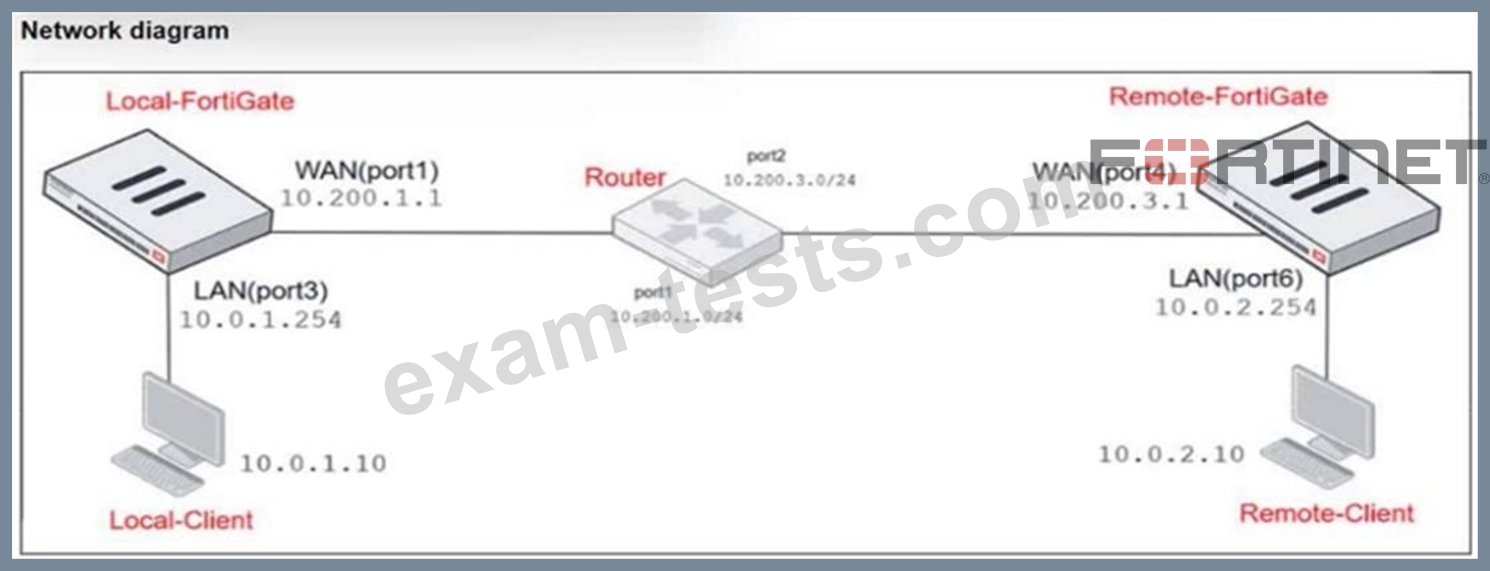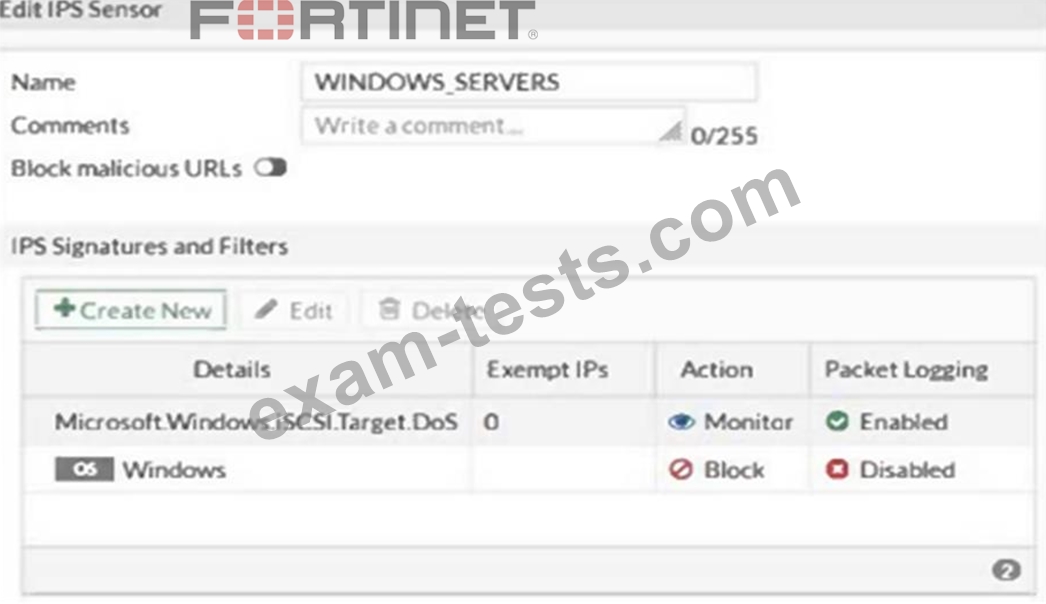Question 11
Refer to the exhibits.



The exhibits show a diagram of a FortiGate device connected to the network, as well as the IP pool configuration and firewall policy objects.
The WAN (port1) interface has the IP address 10.200.1.1/24. The LAN (port3) interface has the IPaddress
10.0.1.254/24.
Which IP address will be used to source NAT (SNAT) the traffic, if the user on Local-Client (10.0.1.10) pings the IP address of Remote-FortiGate (10.200.3.1)?



The exhibits show a diagram of a FortiGate device connected to the network, as well as the IP pool configuration and firewall policy objects.
The WAN (port1) interface has the IP address 10.200.1.1/24. The LAN (port3) interface has the IPaddress
10.0.1.254/24.
Which IP address will be used to source NAT (SNAT) the traffic, if the user on Local-Client (10.0.1.10) pings the IP address of Remote-FortiGate (10.200.3.1)?
Question 12
Refer to the exhibit, which shows the IPS sensor configuration.

If traffic matches this IPS sensor, which two actions is the sensor expected to take? (Choose two.)

If traffic matches this IPS sensor, which two actions is the sensor expected to take? (Choose two.)
Question 13
Examine the two static routes shown in the exhibit, then answer the following question.

Which of the following is the expected FortiGate behavior regarding these two routes to the same destination?

Which of the following is the expected FortiGate behavior regarding these two routes to the same destination?
Question 14
A network administrator wants to set up redundant IPsec VPN tunnels on FortiGate by using two IPsec VPN tunnels and static routes.
All traffic must be routed through the primary tunnel when both tunnels are up. The secondary tunnel must be used only if the primary tunnel goes down. In addition, FortiGate should be able to detect a dead tunnel to speed up tunnel failover.
Which two key configuration changes must the administrator make on FortiGate to meet the requirements?
(Choose two.)
All traffic must be routed through the primary tunnel when both tunnels are up. The secondary tunnel must be used only if the primary tunnel goes down. In addition, FortiGate should be able to detect a dead tunnel to speed up tunnel failover.
Which two key configuration changes must the administrator make on FortiGate to meet the requirements?
(Choose two.)
Question 15
An administrator configures FortiGuard servers as DNS servers on FortiGate using default settings.
What is true about the DNS connection to a FortiGuard server?
What is true about the DNS connection to a FortiGuard server?

